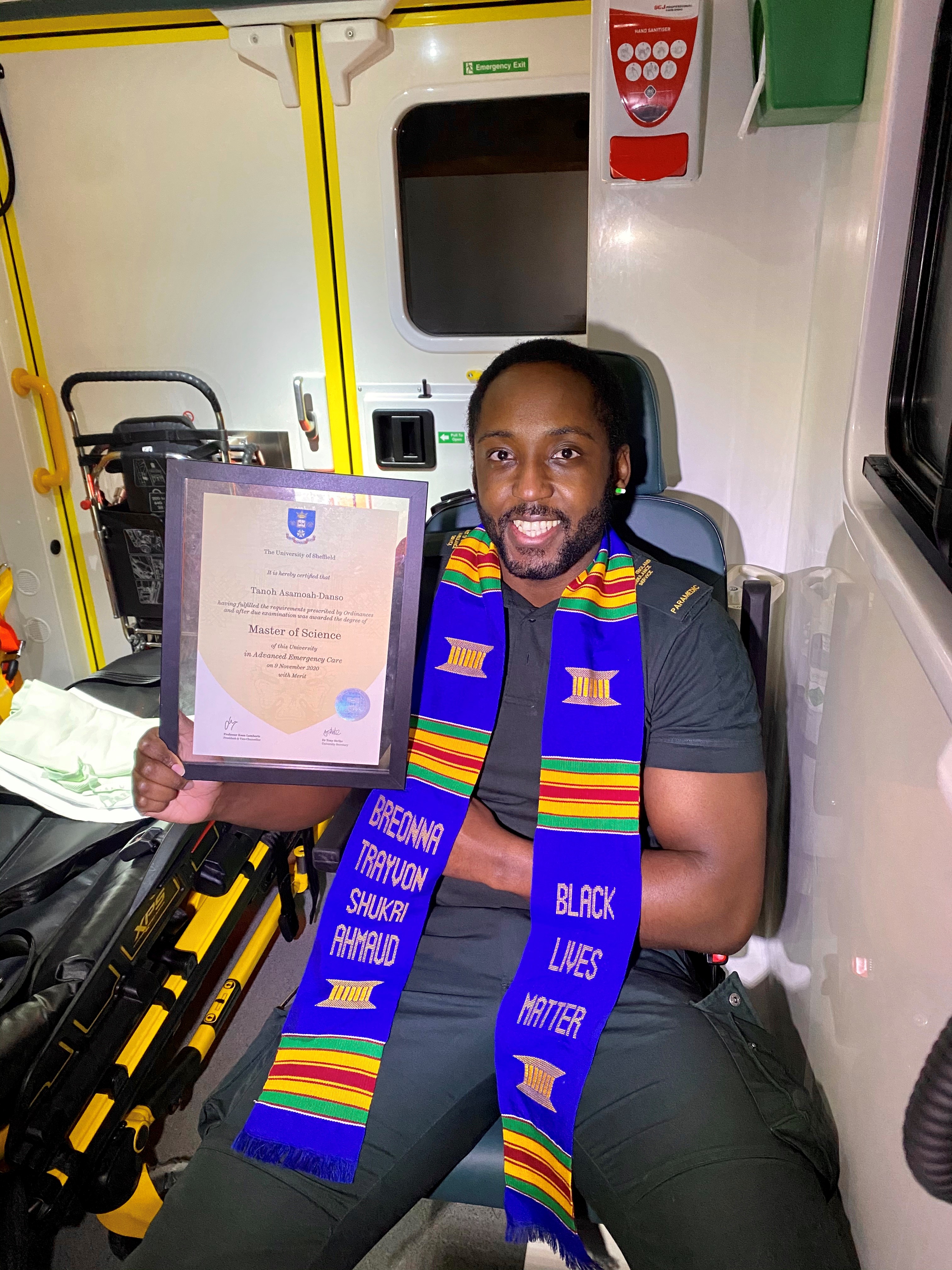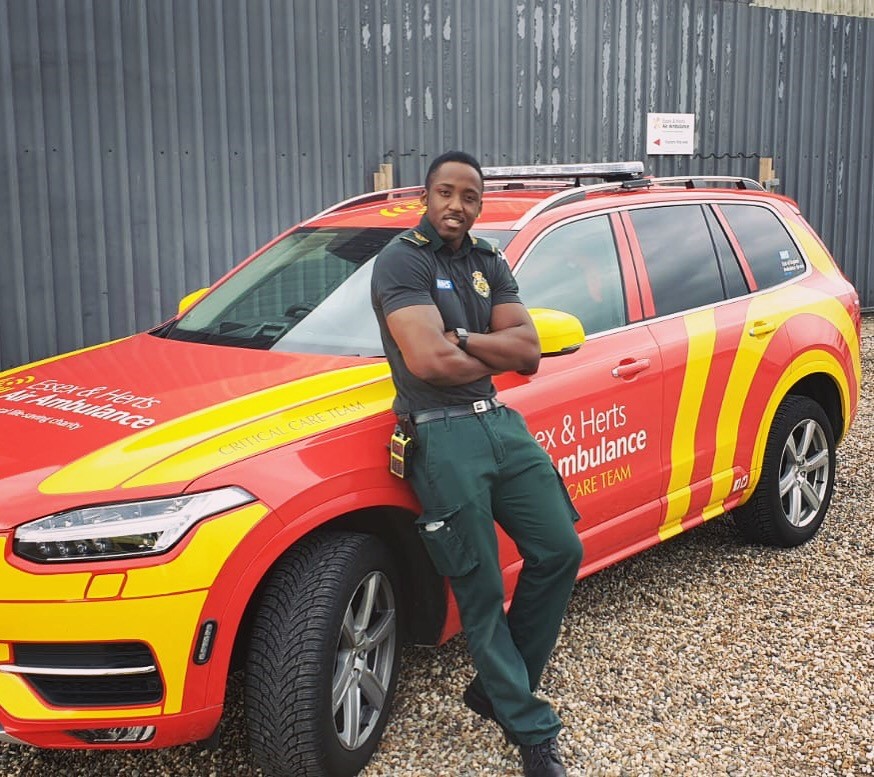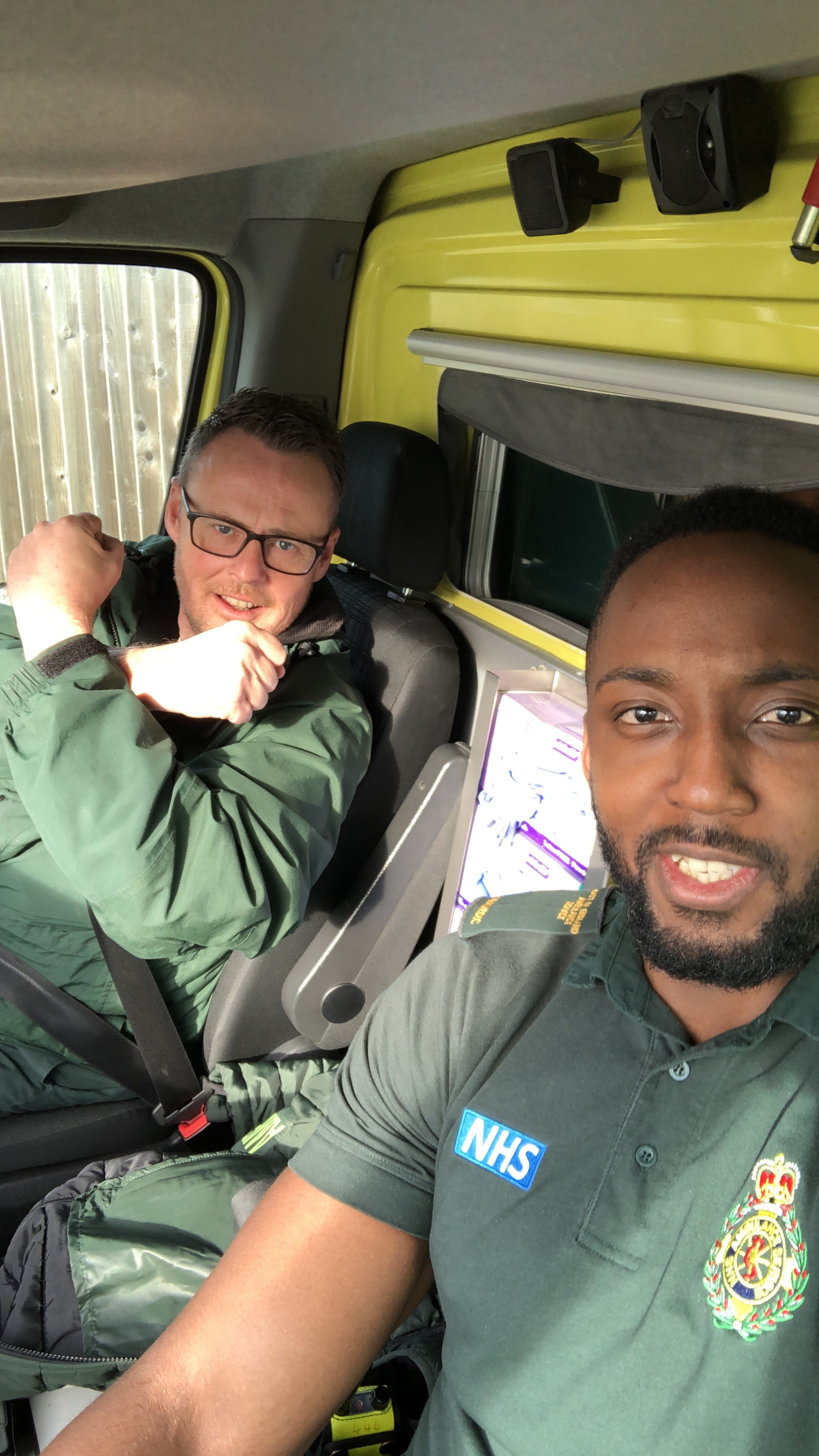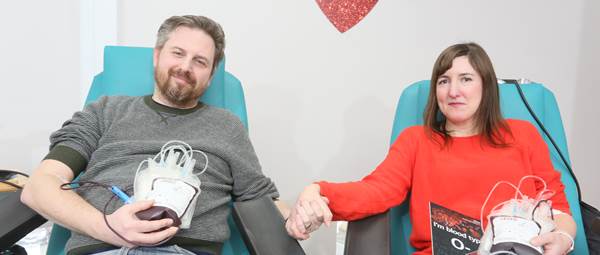"I don't know how you deal with all that blood"
Paramedic, Tanoh, on life on the emergency front line
 I shall get this one out nice and early – being a paramedic is undoubtedly one of the greatest careers out there. Paramedics are responsible for unscheduled emergency care, 24 hours a day. Whether it’s to help you, your parents, your children, or your neighbour, paramedics are there for you when you feel you have no other option.
I shall get this one out nice and early – being a paramedic is undoubtedly one of the greatest careers out there. Paramedics are responsible for unscheduled emergency care, 24 hours a day. Whether it’s to help you, your parents, your children, or your neighbour, paramedics are there for you when you feel you have no other option.
(Picture: Tanoh holding his masters degree certificate)
Providing time-critical, life-saving interventions and transporting patients to a place of care, paramedics are out there making those dynamic decisions. We get it done in the streets, in your front room, maybe even in that cute little shop that you always walk past on your way to work. Paramedics are there to save lives, whilst providing the kind of compassion and empathy that might make you think that every patient is a member of the family.
I qualified as a paramedic in 2017, doing my training and shifts in Essex for East of England Ambulance Service (EEAST). Typically, our shift would always start with a vehicle check to make sure the ambulance is mechanically ready to go and to ensure there is enough equipment and medication for the shift. After a quick cup of coffee, usually made by my crewmate and indisputably every patient’s favourite emergency medical technician, Simon, we go mobile to our first patient once the radio sounds. This is usually just as I think about taking that first sip!
 When people think of the word paramedic or ambulance, the usual buzzwords that follow are "car crashes", "heart attacks", "CPR", and "drunk people".
When people think of the word paramedic or ambulance, the usual buzzwords that follow are "car crashes", "heart attacks", "CPR", and "drunk people".
(Picture: Tanoh stood next to a rapid response vehicle)
The essence of the paramedic role is to save your life. We are highly trained in both medical and traumatic emergencies. In situations such as heart attacks, strokes, severe asthma attacks, severe allergic reactions, severe infections or sepsis we can bring something to the table. Our degree level education allows us to understand the physiology of the patient and how to use pharmacological tools to make them stable enough to get to specialised care as quickly as the lights and sirens can take us.
As a paramedic I can manage the symptoms, but it is ultimately blood transfusions which will truly make the difference.
Management of sickle cell disease (SCD) is also something we can do effectively as paramedics. SCD predominantly affects the Afro-Caribbean community. In a sickle cell ‘crisis’ patients have symptoms such as shortness of breath or severe pain. As a paramedic I can manage the symptoms, but it is ultimately blood transfusions which will truly make the difference.
As a teenager, I would regularly visit my friend in hospital after a ‘crisis’. Back then it was common to be unaware of issues such as shortages of blood and blood types. The impact of sickle cell has no doubt hit home during the years, through my friend’s lived experience and listening to similar SCD stories within the black community.
Trauma emergencies are another element that paramedics are probably most linked with in the public’s view.
"I don’t know how you deal with all that blood"
 Neither do I sometimes, and it can be through a range of scenarios where we need to be thinking about a multitude of other factors. Think assaults, falls from height, motor collisions, and industrial workplace incidents. But as I said, we get it done.
Neither do I sometimes, and it can be through a range of scenarios where we need to be thinking about a multitude of other factors. Think assaults, falls from height, motor collisions, and industrial workplace incidents. But as I said, we get it done.
Extended care skills are provided by a helicopter team: a pre-hospital care doctor and critical care paramedic. My area is covered mainly by Essex & Herts Air Ambulance (EHAAT).
With trauma, one of our biggest concerns is major blood loss. We use a range of interventions to stop any major external bleeding, such as such as military style blast bandages, high flow oxygen and a drug called tranexamic acid to reduce further blood loss and to keep the body going, even though it is running on a reduced tank.
In emergency situations, when a patient’s blood type is unknown, O negative blood is used because it can be given to people of any blood type. This is because O negative red blood cells lack the antigens that can trigger a dangerous immune response. Air ambulances and emergency response vehicles carry O negative supplies for this reason.
O negative blood is therefore always in demand but only around one in seven donors have this universal blood type.
(Picture: Tanoh and his colleague Simon)
Through many field studies, we now know that providing blood and blood products at the scene can improve rates of survival in the most critically unwell trauma patients. It is vital to keep those blood donations coming in. Every donation made makes the biggest difference to so many lives and puts us in the best position to provide the best care possible to those in critical need.

